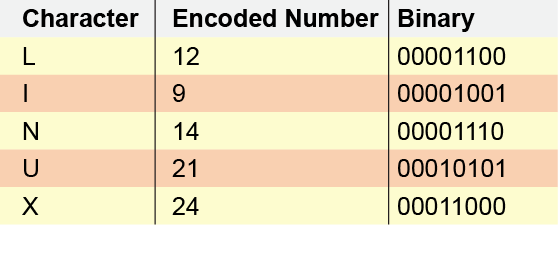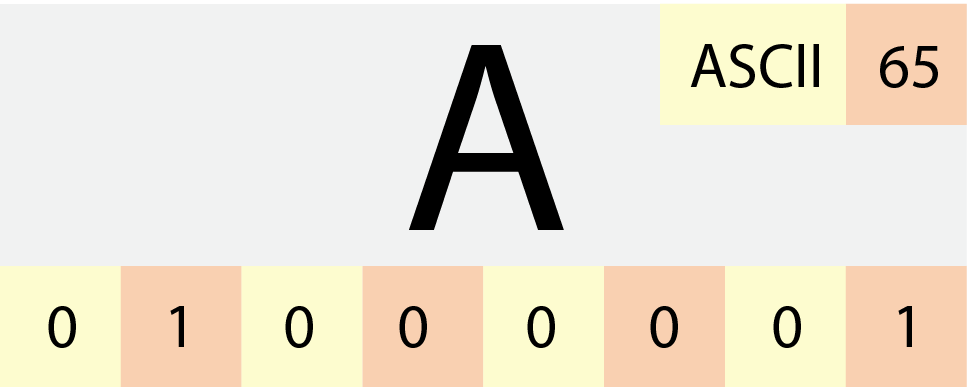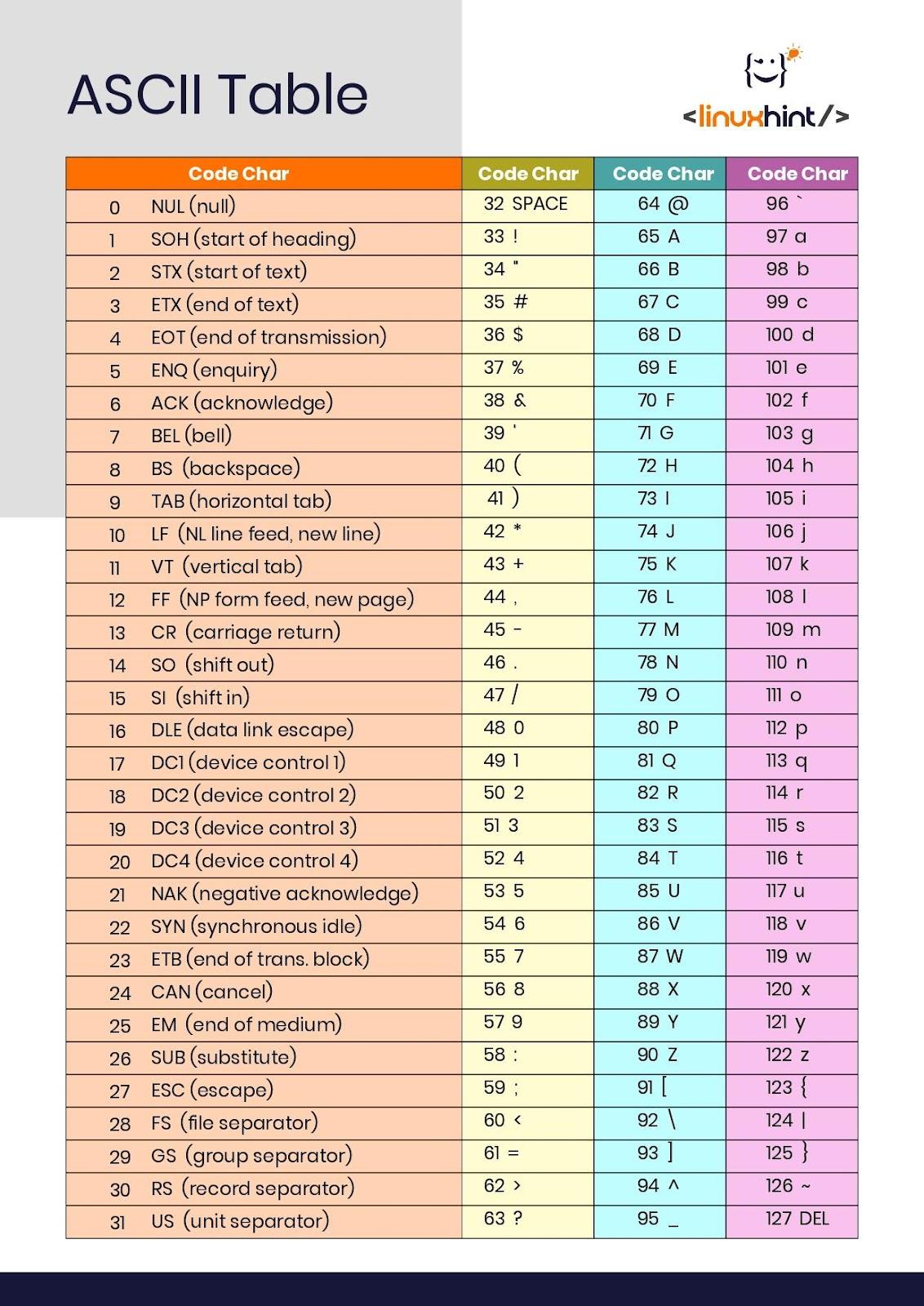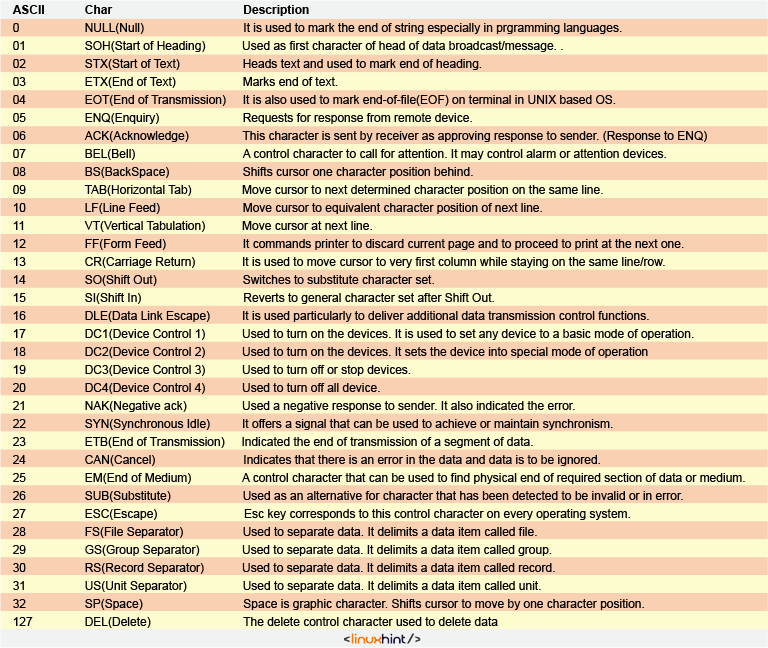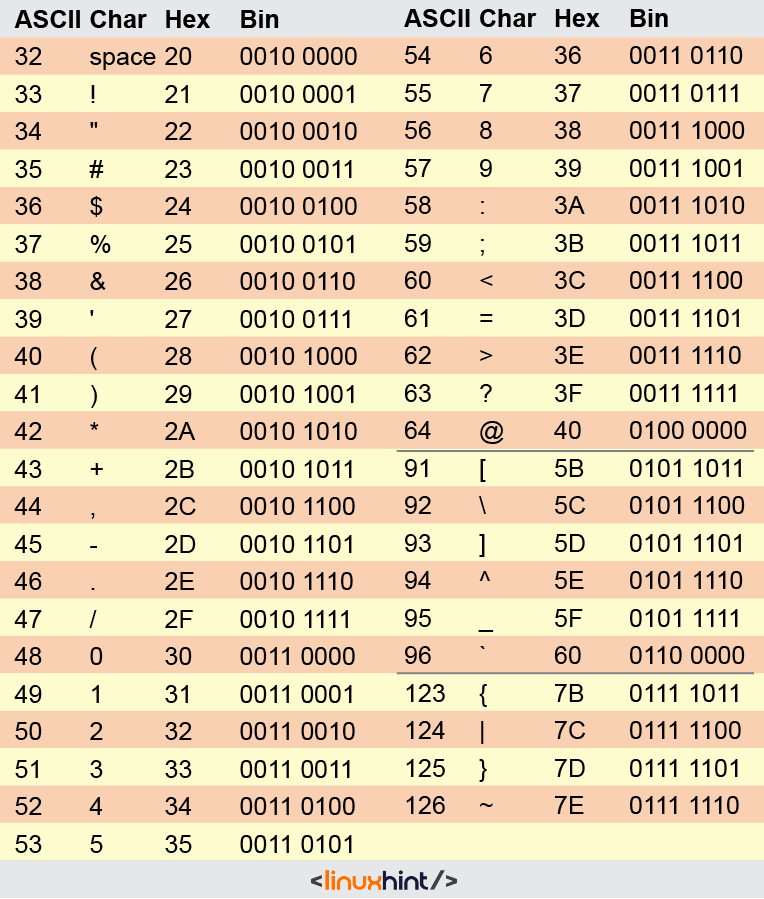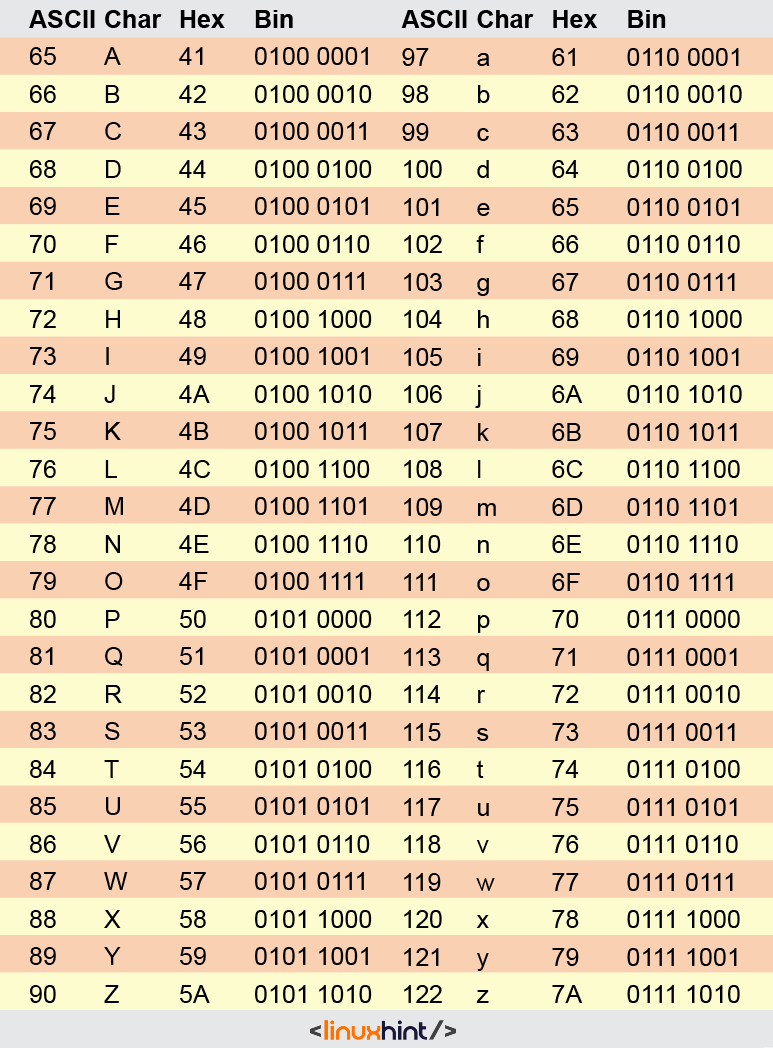The ASCII is the acronym of the “American Standard Code for Information Interchange” and from the name it can be assumed that it is the code used for interchanging the information from machine to humans or machine to machine.
What is character encoding
To understand the ASCII first you must know the character encoding. Character encoding is a process of allocating numbers/digits to characters and these characters can be of many types such as graphical characters or characters of human language. It is employed to store, transfer or manipulate the data by computers.
Character encoding is done so that computers can interpret and process the characters. For example, we can suppose some numbers and assign them to the alphabets. There are 26 alphabets and let’s assign a number from 1 to 26 to all the uppercase alphabets, that means we have encoded the characters/alphabets by assigning them a number.
In the above table letter L, I, N, U, and X are given 12, 9, 14, 21 and 24 numbers respectively. Now, it will be easier for computers to decipher and print the characters. But to encircle the entire English language characters the American Standard Association (NSA) released the first version of ASCII in 1963. ASCII was one of the first standards created for computer information exchange.
Why is ASCII important
Well, it is important because it is a connection between our computer and memory and now it is a standard for every computer. The information stored on memory is in 0s and 1s, and ASCII helps to translate that information into characters or human readable format.
ASCII codes are used in telecommunication devices, computers and other related equipment.
Standard ASCII Table
The standard ASCII table is 7 bit and has the characters with ASCIIs in the range from 0 to 127. The ASCIIs standard is used because the computer cannot directly store any character, nor can it convert it into the binary number. By using the ASCIIs, the computer gets to know about the characters, so these ASCIIs are then converted by the computer into the binary digits.
Understanding the ASCII Table
To find the ASCII value of any character you need to refer to the standard ASCII table as shown below:
The ASCII value of “A” will be 65 and “&” 38. Similarly, for curly braces “{ }”, 123 and 125 ASCIIs will be used.
Let’s take an example of a word “Linux”, that how it is stored on memory:
As the computer does not recognise the characters so therefore ASCII assigned a number to all the characters and corresponding binary value is stored in the hard drive. The word “Linux” will be stored in binary format on the memory as displayed in the above image. The ASCII assists in writing and reading the corresponding data of the characters from the memory.
There are 128 characters and each character is assigned an ASCII number. Let’s dissect the table into two categories to further understand it:
- Control Characters
- Printable Characters
Control Characters in ASCII Table
The ASCIIs from 0 to 32 and the 127 are the control characters; they are also called Non Printable Characters or NPCs. As name suggests the control characters control the placement of the printable character or used to command the devices that are connected to the computer.
Some of the control characters are associated with keyboard keys. For example, the backspace key; when you press the key the effect can be visualized on screen but it does not print any character.
Similarly, to communicate the computer for ending of any text or starting of the text the ASCIIs for the respective characters are used. These control characters tell the computer how to run the code and print the output.
A chart of all control characters is:
Printable Characters in ASCII Table
The printable characters are those characters that visually appear on screen such as all the alphabets, numeric characters, symbols and operators. The printable character can further be classified as:
- Numbers and Symbols
- Alphabets
The numbers and symbols include all the numerical values 0-9 and symbols such as addition, subtraction operators while the Alphabets category includes all the English alphabets with upper and lower case.
Numbers and Symbols
This portion contains symbols and have the ASCIIs ranging from 32 to 64, 91 to 96 and 123 to 126. These symbols include mathematical operators (+, -, * ,/) , punctuation marks.
For example, the ASCII of forward slash “/” will be 47 and for addition “+” it would be 43.
Alphabets
The last portion of the standard ASCII table is the 26 alphabets and there are separate ASCIIs for the upper-case letters and Lower-case letters. ASCIIs 65 to 90 include all the uppercase letters and 97 to 122 include all the lowercase letters.
For example the ASCII of capital “O” and small “o” will be 79 and 111 respectively.
Conclusion
Computers can only save the data in numbers because they only understand the number language. So, in order to make computers understand the characters, each character has to be a specific number. The characters not only include the alphabets but they also include the different symbols that can be used in programming. In this write-up the standard ASCII table is discussed to give a better concept that how it can be understood and how it is useful for the communication between the different devices and computers.

